Can a car ever be considered a work of art? It is a question that has often sparked debate. Art connoisseurs might argue that a car is little more than a collection of steel, glass, and plastic. Classic car enthusiasts could potentially counter that Michelangelo’s statue of David is nothing but a lump of marble or that the Mona Lisa is little more than an old picture of an unknown woman. However, I believe that common sense would prevail in such cases because the true value of art rests on whether it ignites an inner passion. The Mona Lisa and David achieve that feat, and there is no reason why a classic car shouldn’t. Many readers will look at this 1961 Jaguar E-Type Roadster and experience the feelings I have described. The E-Type, particularly in Roadster form, is considered by many to be the most beautiful car ever built. This vehicle is all that and more because its claim to fame is that it is the first E-Type of any description sold by Jaguar. It has had a long and illustrious history, but a painstaking restoration has returned it to a factory-fresh state. The time has come for it to find a new home. The seller has listed it here at Gooding & Company Auctioneers. It is set to cross the auction blocks in Molesey, England, on September 1st. The price of admission won’t be cheap, with an auction estimate of £900,000 – £1,200,000 (US$1,142,500 – US$1,523,000).
The E-Type caused a sensation when Jaguar unveiled it at the 1961 Geneva Motor Show. However, it was a debut it nearly didn’t make. The first two cars were considered prototypes, and the car destined for Geneva had been on-loan to motoring journalists in England for testing. The company received the Fixed-Head Coupe version from the journalists in time for a breathtaking sprint from England to Geneva. It arrived a mere twenty minutes before it was due to be unveiled, was given a quick clean, and the covers were pulled off a car that was still ticking and had a warm hood after its cross-country marathon. Such was the demand for test drives that Jaguar despatched a second car overnight to meet the needs of those present at the show. This Roadster was the first production example sold by the company, spending time in the hands of Frank “Lofty” England. This gentleman had forged his roots as the company’s Racing Department Manager. By the time this car rolled off the line, he was serving as Jaguar’s Assistant Managing Director. He loaned the vehicle on several occasions before selling it. The Roadster passed through the hands of several owners before being dismantled in 1971 for restoration. The process stalled before it started, with the car languishing in the back of a shop for decades. The current owner purchased the decaying classic in 2002, entrusting it to Classic Motor Cars Ltd. in Shropshire, UK, for a meticulous restoration to its original form. No stone was left unturned in the process, including manufacturing a new hood to factory specifications before applying a fresh coat of the car’s original Indigo Blue paint. This shade was only offered for two years, further increasing this car’s rarity and desirability. It presents superbly, with no evidence of blemishes, marks, or imperfections. The chrome and trim contrast the dark paint shade, while the wire wheels look flawless. It is fair to expect perfection from a vehicle of this caliber, and this E-Type delivers.
Jaguar’s aim with the E-Type was to produce a car that not only rivaled any of its European competition stylistically but was cheaper and could hit a top speed of 150mph. It succeeded on the first two counts but required some automotive sleight-of-hand to achieve the third. Initial testing revealed that the car’s 3.8-liter DOHC six ran out of breath at 140mph, and no amount of tweaking could address the issue. Jaguar went to the point of taping every exterior opening closed, removing the bumpers and mirrors, and inflating the tires to their maximum allowable pressure to reduce rolling resistance. Still, the E-Type stubbornly refused to hit that magic mark. With the launch mere weeks away, Jaguar employed some creative thinking. Almost every contemporary motoring report used a Fixed Head Coupe carrying the registration “9600HP.” That car repeatedly topped 150mph, but all was not as it seemed. The vehicle was discovered languishing in a barn decades later and was completely restored. When dismantled, it was found that its engine was full of components from the company’s D-Type race cars that had competed at Le Mans. The secret was out, but nobody thought any less of the vehicle or the company. This Roadster features its numbers-matching engine, which was rebuilt to its original factory specifications. It should comfortably produce 266hp and 260 ft/lbs of torque, which feeds to the road via a four-speed manual transmission. It is worth noting that while Jaguar claimed a top speed of 150mph for the Fixed Head Coupe, it quoted a figure of 131mph for the Roadster. This car is in excellent mechanical health and is a turnkey proposition for a new owner.
I have always believed that classic British sports car interiors should include two things; A broad selection of gauges to monitor every aspect of the vehicle’s health and performance and an array of toggle switches to operate its various features. This Roadster ticks both of those boxes and presents as beautifully as the rest of the vehicle. Its upholstered surfaces are clad in rich Red leather, with matching carpet on the floors. I noticed some slight stretching on the driver’s seat, evidence that this classic has been driven and enjoyed. The timber-rimmed wheel is perfect, with the same true of the bright trim pieces. The factory AM radio occupies its rightful place, and there are no aftermarket additions. I have been privileged to drive several extremely desirable classics, and one of those was an early 3.8-liter E-Type. I looked at the interior and was skeptical about the ergonomics and user-friendliness of the controls. However, it was one of the most amazing experiences of my life and one I will never forget. Everything fell to hand easily, with the unassisted steering and stick shift surprisingly light and easy to operate. It was one of those rare occasions where I didn’t want the experience to end. If someone ever offers you such a chance, all I can say is that you should grab it with both hands. You won’t be disappointed.
I am a passionate classic car enthusiast and stand in awe of the Jaguar E-Type Roadster. Various sources claim that Enzo Ferrari once described it as the most beautiful car ever built. That quote has never been confirmed, and I struggle to believe he would attach that title to a vehicle that didn’t emerge from his factory. Whether he did or didn’t utter those words doesn’t affect the fact that many enthusiasts share that sentiment. The auction estimate means that potential buyers will be limited, and a successful sale in that bracket will eclipse the previous sales record for a production example set in 2016. I don’t know whether it will happen, but I won’t be surprised if it does.




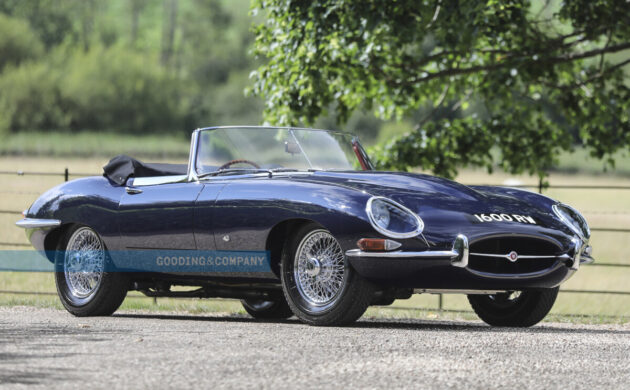
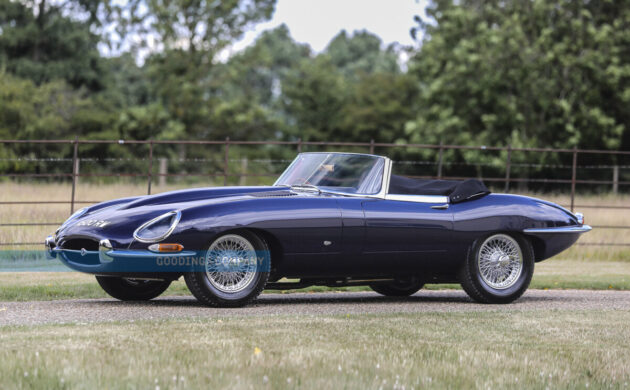
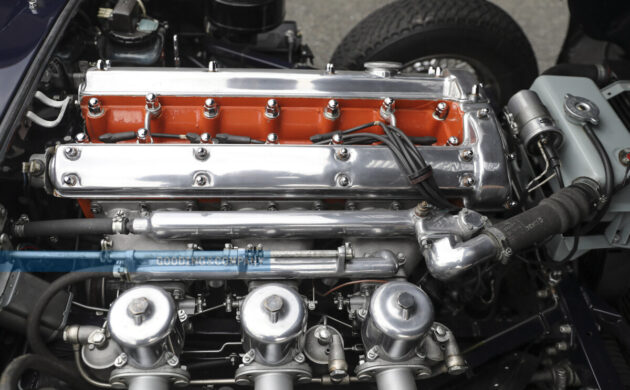

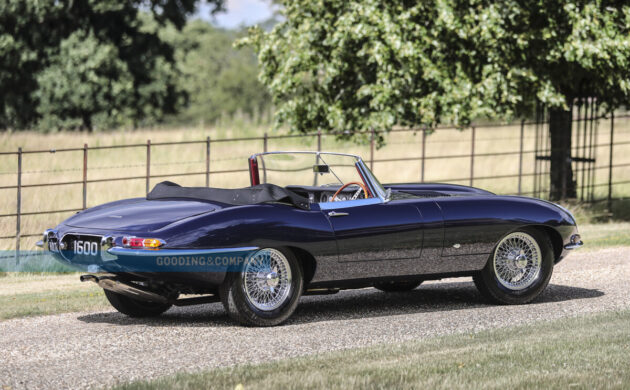
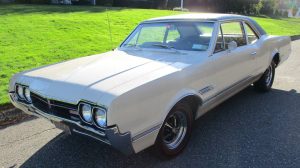
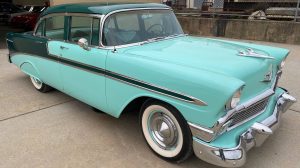

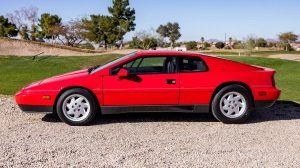


Adam, your articles are always well written but this time you’ve really gotten deep with the opening about who defines art and no doubt the vast majority of those of us that appreciate the fine lines of a beautiful machine, be it a Bugatti
Type 57 Atlantic, a 30 foot HackerCraft Dolphin or the LMS Duchess of Hamilton. Too many of the art snobs forget the definition of art, “the expression or application of human creative skill and imagination, typically in a visual form such as painting or sculpture, producing works to be appreciated primarily for their beauty or emotional power”(Oxford Dictionary).
We would argue that on occasion a designer will pen a mechanical sculpture that stands the test of time like the E Type and hence is a work of art.
Thank you so much for your kind words, Nevadahalfrack. I always hope that my undying passion for classic cars is apparent in my articles and I feel privileged to do what I do. Art comes in so many forms and doesn’t necessarily need to be displayed in a gallery to be considered as such. I hope you keep enjoying our work and the variety of approaches our writers take. Kindest regards.
I owned,what I think is a better
example of the Etype,,1965
4.2 with syncro mesh 1 gear
Transmission,,better seats,and
Arm rest on the door,+ other
refinments,,I held on to it for
twenty five years,,!!
I agree with you about the mechanical improvements in the later cars, but this first car is spectacular just as it was built. You were lucky to own and enjoy an E-type for so many years. I never have and probably never will.
Two British “firsts” in as many days. I stumbled upon (okay the algorithm fed to me) a very good YouTube video about finding the first Land Rover ever built. It was found in a barn almost rusted in half after sitting for decades in a field, but it was very complete. It was given enough of a restoration to be driveable, and drive it they did! Go watch the video.
They took a different restoration route with this car, and it’s worth every bit of the auction estimates.
Well spoken, Olde Chap!
Here is a little-known bit of Jaguar E Type history: while a whole lot has been written about the E Type not doing 150 mph and the factory cheating to get its road-test car to do 150 mph…it actually is a 150 mph sports car. Sounds confusing? Not really, once we sift through what happened.
This article mentions a 131 mph top speed for the roadster and D Type parts in the motor of the test car. Other variants of the story of the E Type not able to do 150 mph have it that the test car supplied to the magazines had a modified XK-150 engine tweaked for more power than the standard 265 bhp… There are also other variants of the story that contradict both the ones mentioned here, including that roadsters could hit 145 mph–unmodified, with their tops and windows up. The thing to know is that Malcolm Sayer–the designer–had assured Sir William Lyons in 1959 that the E Type would be able to do a true 150 mph. To do this radial tyres (“tires” in America) were a must, and Michelin, which at the time manufactured the famous, pioneering Michelin X radial, had assured Sayer that by late 1960 it would be producing a 185 X 15 Michelin X radial. It turns out that Michelin did not produce such a tyre until several years into the future. In March of 1961 all that was available to Jaguar were BIAS-PLY tyres. Thus the Dunlops that Jaguar was forced to fit originally were totally inadequate for a car with such advanced suspension…yet the 150 mph boasts had already been made. Therefore to get around this fiasco some behind-the-scenes doctoring was performed. When in 1963 Pirelli introduced the 185 x 15 Cinturato radial, suddenly the top speeds of E Types–as if by magic–went up when fitted with the new rubber from Italy.
By 1965 the 4.2 E Type, with more torque but no more horsepower than its 3.8 predecessor, was being equipped with new Dunlop RADIALS. Aware of stories of the factory having cheated in 1961 with its road test car handed over to the magazines, the automotive writers for Autocar and The Motor randomly picked roadsters and coupes from dealership floors to test–ensuring no doctoring. The roadsters had trouble hitting 150 mph, but tended to come very close at over 149 mph. The heavier but more aerodynamic coupes could do a tad over 153 mph. Thus on balance was the E Type a 150 mph car? Equipped with correct rubber it had been designed for, at least as an average between the coupe and the open two seater, the answer is “yes”.
The squabbles about what can be considered art have been going on for more than a hundred years. Whether Enzo Ferrari ever made the celebrated remark isn’t certain but he never denied it and in 1996 New York’s Museum of Modern Art displayed an E-Type; an opalescent dark blue, open top roadster. There were flaws in the original engineering which needed to be corrected but visually, a Series 1 roadster seems perfect and it’s difficult to think of any way it could be improved. It’s a work of art.
https://www.moma.org/documents/moma_press-release_386932.pdf
I had a 1966 roadster Beautiful to look at and a great handling car but I’m 6,2 230 lbs and not all that flexible anymore ( I was in my mid 50s when I bought it ) I could enter the car without any major issues but getting out of the driver’s seat over that huge sill with the top up was almost impossible for me as my head would not clear the top so I had to kinda fall out of it ! I had a 1976 TR 6 at the same time and had no issues at all getting in and out of that car. I do however believe the E Type is one of if not the most beautiful looking cars ever produced
The XKE, 2+2 excluded, was the most gorgeous production car of all time.
I had a red ’63 3.8 Coupe, and absolutely LOVED it. I regret to this day selling it because, as a young guy, I ran out of money.
Didnt we all … I sold mine too ….. terrible error of judgement …..
Will they take a check?
This story reminds me that it was Norman Dewis that had to drive the E Type from UK to Geneva overnight in order for it to be on show for opening time. Norman was also the test driver for Jaguar that managed to modify the only Jaguar XJ 13 ever built. He was test driving it on a race track when cornering at 146 mph he felt something go wrong at the rear of the car and it started to slide out of control, so he ducked down into the passenger seat while the car managed to do two end over ends before doing 3 or 4 roll overs! The car was eventually re built and is most likely in the British Motor Museum in Gaydon, just down the road from Silverstone circuit, although I can’t confirm that.
Solosolo,
You are correct, the car was indeed wrecked by Dewis [at the MIRA test facility track], and put into long term storage by Jaguar. Years later, Lofty England was asked to have his company Abbey Panels restore the car, and it is indeed at the BMIHT museum in Gaydon.
Too bad I didn’t win the mega millions last week.
Along with several millions of others like us!
I imported a 61 RHD XKE couple in 1973 when I was in the Navy. I spent a lot on beer to have our airframe guys go over the body to fix any corrosion or bent panels. The suspension and engine were easy to work on, I didn’t need to replace the clutch and, the only real work was replacing the back inboard brakes. I drove that puppy for 4 years and had to sell it when I left the Navy and joined the airlines. I was cruising around 120 when I spotted a state trooper on an overpass and on he came. I slowed down and pulled over. He had never seen an XKE and after I let him drive it, we parted ways, without me going to jail. I equally love the XKE and 911, two rides that are so different but nothing else like them.
nicely worded i believe Enzio referred to the F .H. C a beautiful work of art and not an OTS ,these early e-types are climing $$$$$$ chain ,i have a 67 fhc , a nut & bolt resto for 1/10th the figure,this jaguar will tip the scales take it to the bank. problem with that it will be in the living room. bang them gears i had 18 of them ,80 and still at it .
Excellent write-up: enlightening, succinct, and compelling. Thanks!
I was in the fixin biz many moons back, and while the 6cyl version is wonderful, if you’ve ever put your foot into a 12, you’ll know you’re cruisin!
But you’re not stylin’ like in one of these.
TRIVIA This is a beautiful E Type and restored to a high standard. The write-up also mentions a “meticulous restoration to its original form. No stone was left unturned in the process” and “It is fair to expect perfection from a vehicle of this calibre…”. Well, I have found a glitch. I will mention it just for the fun of it as trivia–not that it cannot be easily reversed in 15-20 minutes. Those first, early 90 “flat floor” E Types with outside latches, ALL came with Lucas PL 700 headlamps, with a shield in the middle of the tri-bars and the letters PL. This one has the earlier P 700 lights with a round dot in the middle of the tri-bars, that came with the AC Aces.. Very small point, but a bit amazing, considering the money being touted by the auctioneer…as the small point I have made is very much common knowledge in E Type circles.
I made a comment to a lady I went to design school with, that the topless E Type convertible was the most beautiful thing I’d ever seen. She responded that that was only because I’d never seen her topless. I was totally speechless.
Did you ever get her to confirm her claim?
I’m afraid not. But, the overactive imagination of a 21 year old accepted it. I met her again 20 or so years later and she remembered the conversation which I had relegated to the depths of my memory. I still believed her claim.
Made it from San Clemente to Anaheim in twenty minutes in my ’69 Series 2 back in 1986 – early one morning on the 405. Fun old days.
Had a Primrose yellow ’61 back in the ’60’s. Had mine up to 145mph. Loved that car!
This E Type has sold for over 900 thousand pounds–$ 1.14 million U.S. Given that admittedly the entire bonnet is a replacement (one third of the total body), it makes one wonder just how much more of the original body was replaced. We know that most of the interior is not original. Although a VERY well presented car and restored to a high standard, it is still A PARTIAL REPLICA OF ITSELF. It makes me wonder what this does or doesn’t do for extremely newish-looking, but highly original E Types such as mine, which comes across as a very well-kept three or four year-old car. Does such a condition bump up the value dramatically, or is the beauty of the finished restoration you see–even if riddled with high-quality reproduction parts galore–an emerging standard for valuation?